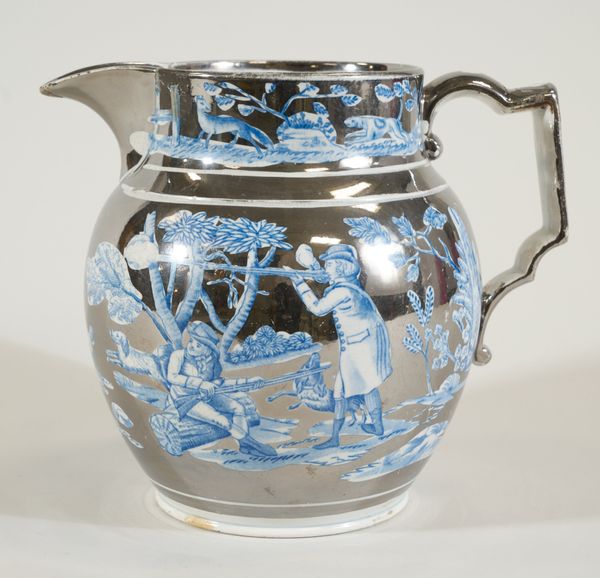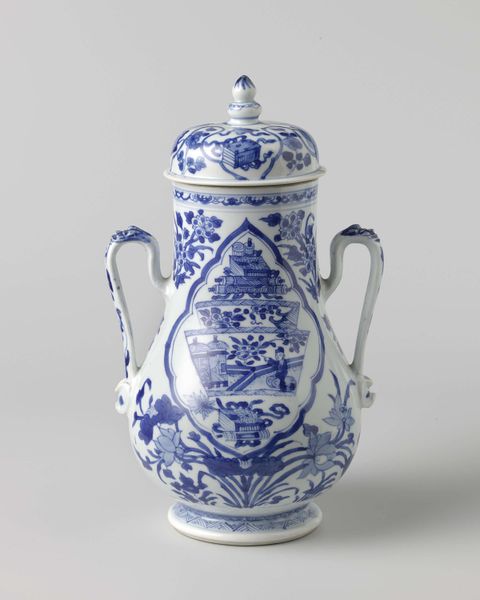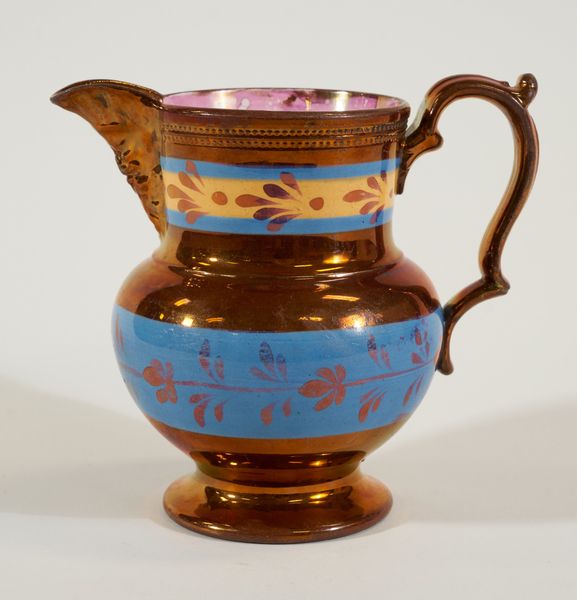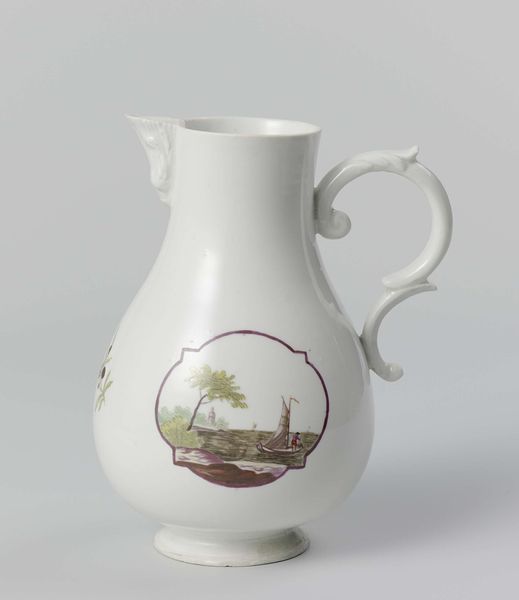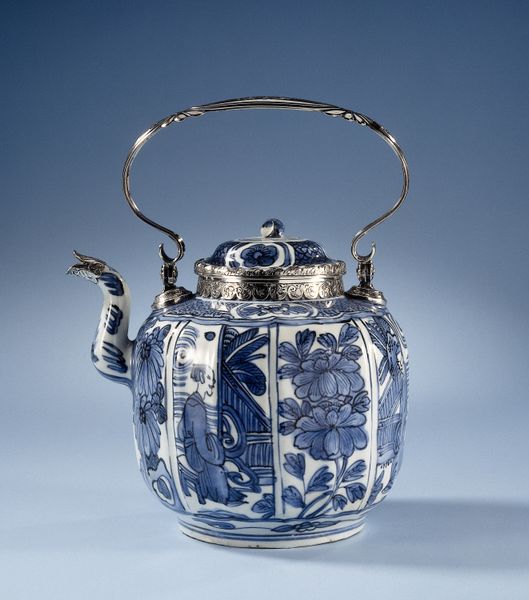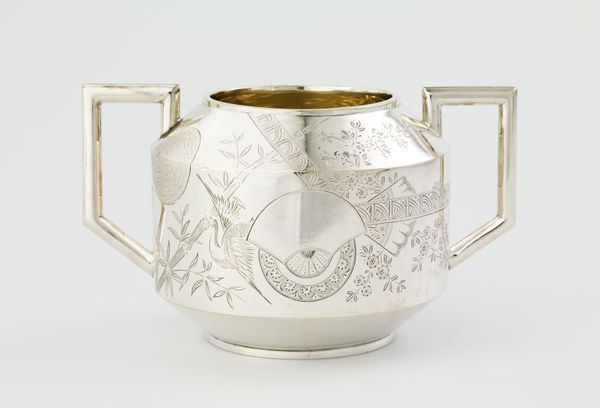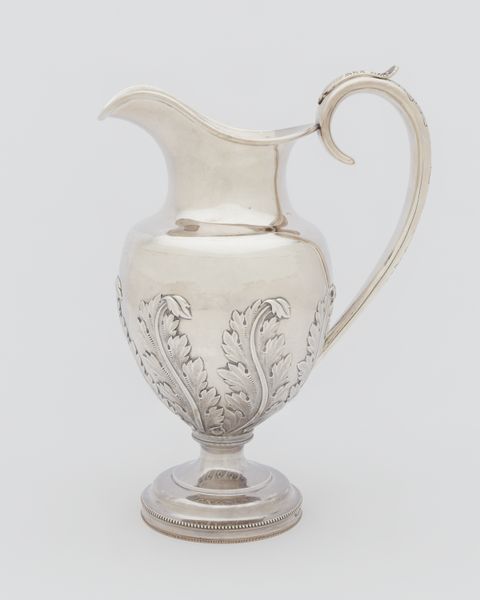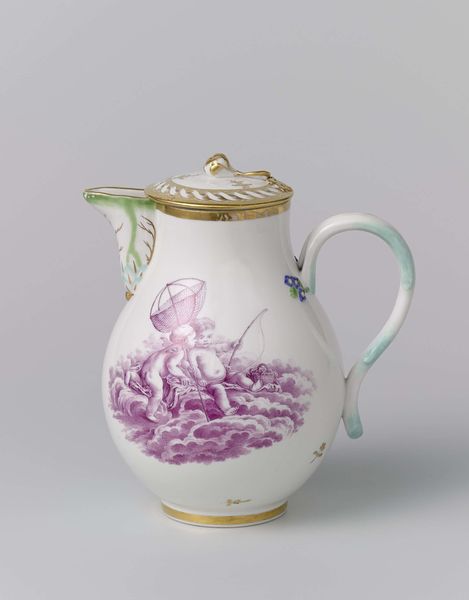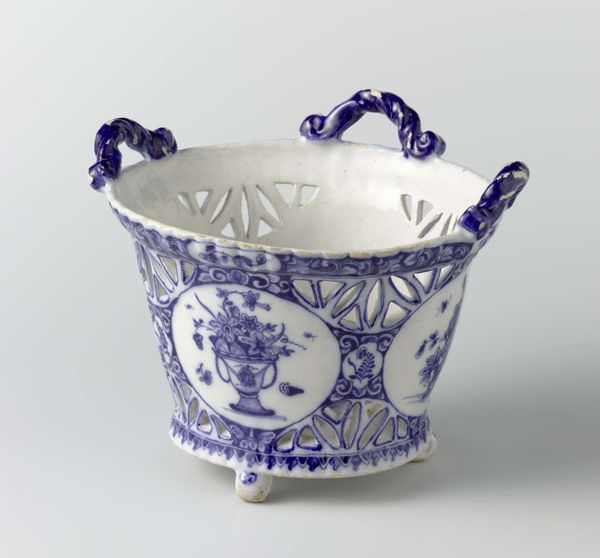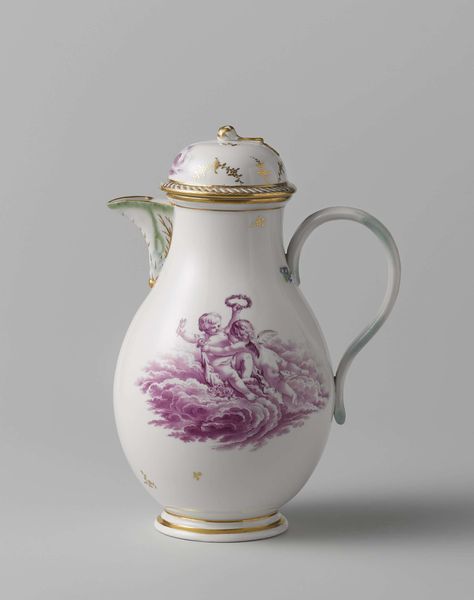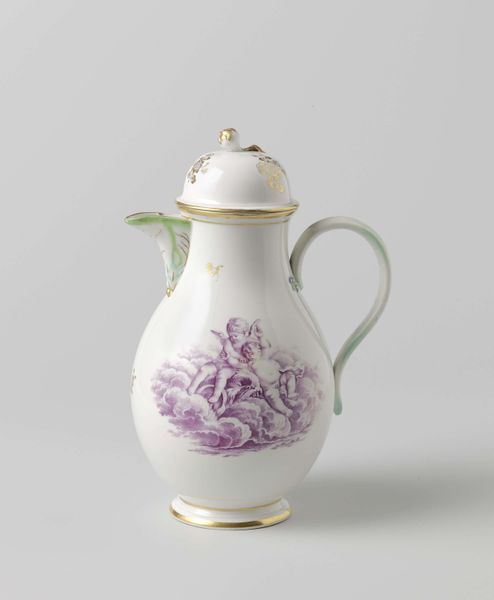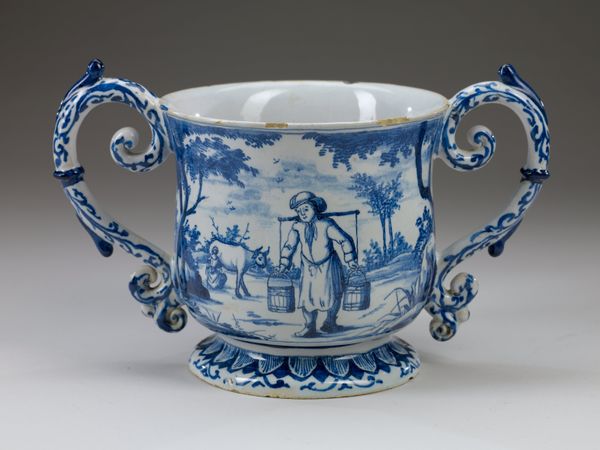
ceramic, earthenware
#
asian-art
#
landscape
#
ceramic
#
earthenware
#
stoneware
#
england
#
orientalism
#
ceramic
#
genre-painting
Dimensions: 5 1/2 x 6 7/8 x 5 1/4 in. (14 x 17.5 x 13.3 cm)
Copyright: Public Domain
This pitcher, now at the Minneapolis Institute of Art, was made anonymously using earthenware and lusterware. Focusing on the materiality of this object reveals a lot. Earthenware, easily shaped but also fragile, speaks to both the ubiquity and preciousness of ceramics. The lusterware finish, meant to imitate more expensive silver, hints at aspirations of luxury. The body of the pitcher would have been formed using a mold. Once fired, the decoration would have been printed on, transferring the image onto the surface. The purple Chinoiserie design is a sign of trade, labor, and consumption. The exotic scene is rendered through a Western lens, reflecting colonial power dynamics and the consumer's desire for something "other." Every stage of the process, from the mining of the clay to the labor involved in production, reflects a complex web of social relations. By examining its materials, production, and cultural context, we can understand how this anonymous pitcher reflects broader issues of class, trade, and aesthetics, expanding our understanding of both art and society.
Comments
No comments
Be the first to comment and join the conversation on the ultimate creative platform.
